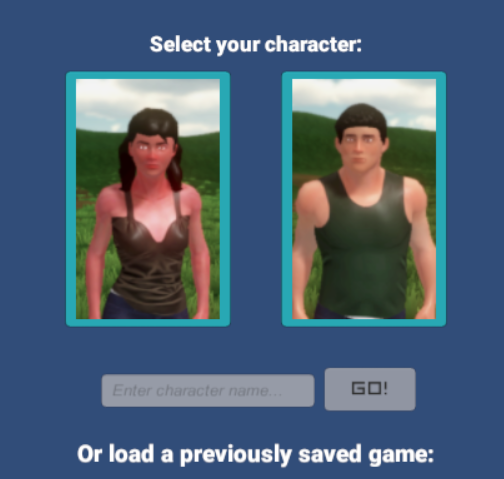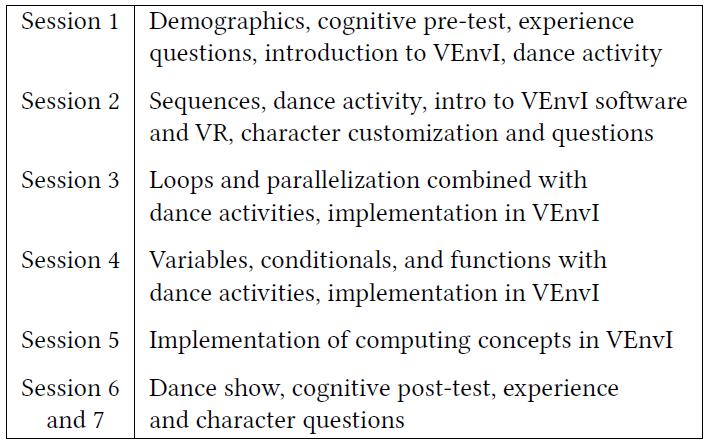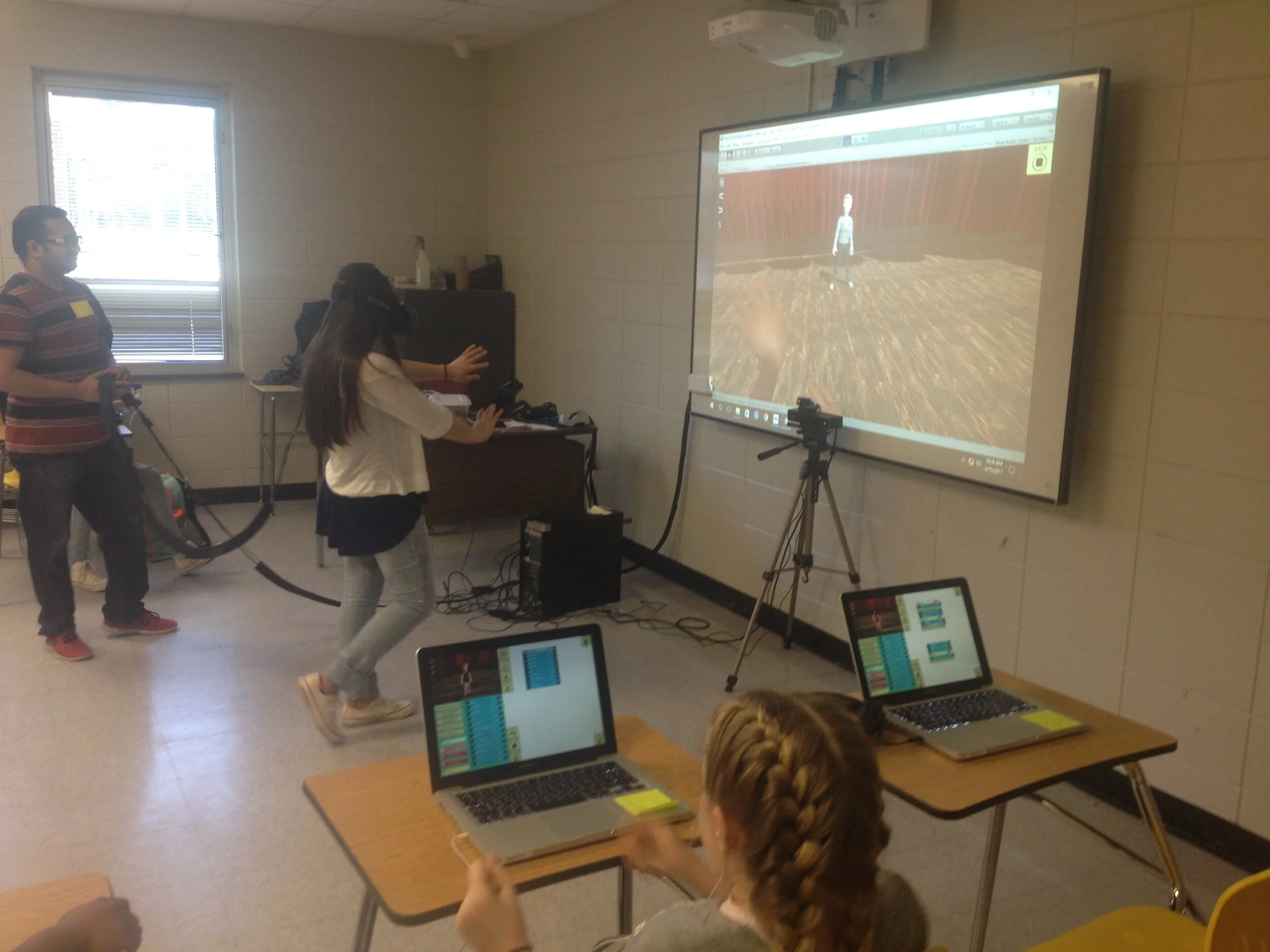Virtual Environment Interactions (VEnvI)
Question: Characters play important roles as instructors and assistants in educational, medical, and military applications. How do we optimize characters for teaching?
GOAL
Design a research application and publish finding evaluating how the presence or absence of character customization options influences learning.
PARTICULARS
Role: Interface Designer & Research Scientist at Clemson University | 6-person research and development team | 2017
Tools: Unity, Maya, Adobe Fuse
Technology: Oculus Rift, Desktop App
SUCCESS
Case study led to published findings contributing to knowledge in designing virtual avatars for teaching. Application is available for classroom use.
A Need for Connecting to Characters
Virtual Environment Interactions (VEnvI) is a system and curriculum aimed at middle school students that combines computer science and dance concepts.
VEnvI utilized the Unity Multipurpose Avatar (UMA) system, an open-source avatar creation framework available in the Unity Asset Store. In a pilot test with the UMA system, users commented on their characters mentioning that “it was creepy” and “it looked fake.” These comments suggest that the characters provided were not appealing to the demography.
The Making of Avatar 2.0
I began creating a new avatar that users could relate to by skillfully rigging and skinning an androgynous child model along with outfits and accessories provided by Adobe Fuse. Previous research has shown that allowing users to customize their characters influences learning factors such as confidence and motivation, so I included a wide variety of outfits and accessories to facilitate a fulfilling experience.
Character polygons that would be obscured by clothes were removed to prevent unrealistic intersections of the character model and clothes. The following images show the base character model and the overlapping layers of outfits and accessories available for customization.
Designing a Delightful Customization Menu
Now, the users needed a way to access the new customization options. Meeting weekly with my 6-person research and development team, I designed a customization menu providing swappable character accessories, textures, and tinting; and integrated it into the existing VEnvI code in Unity. My menu separates the components into 4 pages quickly digestible by category of body appearance, clothing, face accessories, and naming options. Visual icons enable rotation and zooming in on the character for further detailing. Each customizable item has 12 or fewer options to prevent the customization menu from being the main focus of the educational software, but allow as much room for individuality as possible. I was attentive to implement skin, hair, and eye color options inclusive to a wide demography; as well as hair, top, and bottom styles facilitating a wide variety of female, male, and unisex styles.
Research Design
Does the new character customization experience I implemented not only delight users, but also enable more efficient learning?
I conducted a case study to investigate long-term effects of assigning versus customizing characters, and explore perceptions of personal character appearance. A total of 36 students from a local middle school participated in my case study.
18 users were placed in the Customization group, in which they could use the full customization interface.
18 users users were placed in the Assignment group, in which they were given a pre-designed character.
My team and I led the educational game curriculum, introducing users to object-oriented programming in seven one-hour sessions over two weeks. Following is the experiment schedule:
In each session, students learn a dance sequence, such as part of the Cha Cha Slide, then they learn a computing concept, and are asked to code their dance moves into the VEnvI interface. To help them conceptualize their own designs, they are encouraged to get up and dance anytime while coding. All students also had the opportunity to dance in virtual reality along with the character.
The Result
My findings confirm that users more efficiently remember and understand new information when they can choose and customize how their character looks compared to when they are assigned a character. Users with customizable characters also liked and identified with their characters more, and were more influenced by the presence of their peers in deciding to dance.
The takeaway is that developers should include customization options for characters in educational games when possible. In addition to quantitative findings that customization increases learning effects and user delight, 9 users in the Customization group also expressed that they wanted further customization options: “I don’t like the hair. Needs more variety of accessories, styles, and colors.” “I tried to make it me but there wasn’t any way to make it look like me.”
VEnvI was integrated into middle school lesson plans and is available for educational use. Following is the application for download:
Publication
Lin, L., Parmar, D., Babu, S. V., Leonard, A. E., Daily, S. B., and Jörg, S. How character customization affects learning in computational thinking. In Proceedings of the ACM Symposium on Applied Perception (SAP ’17). Article 1, 8 pages.












